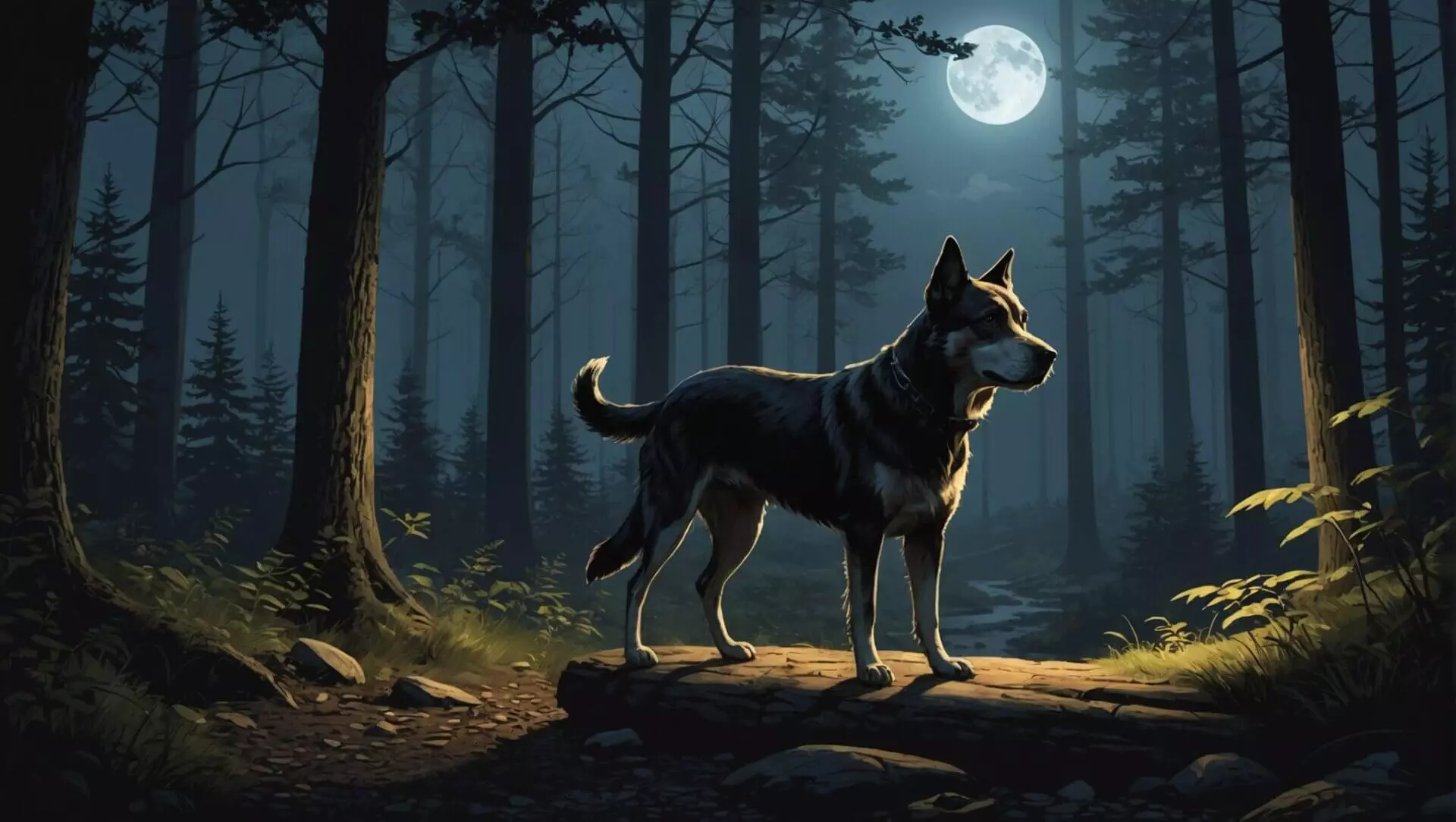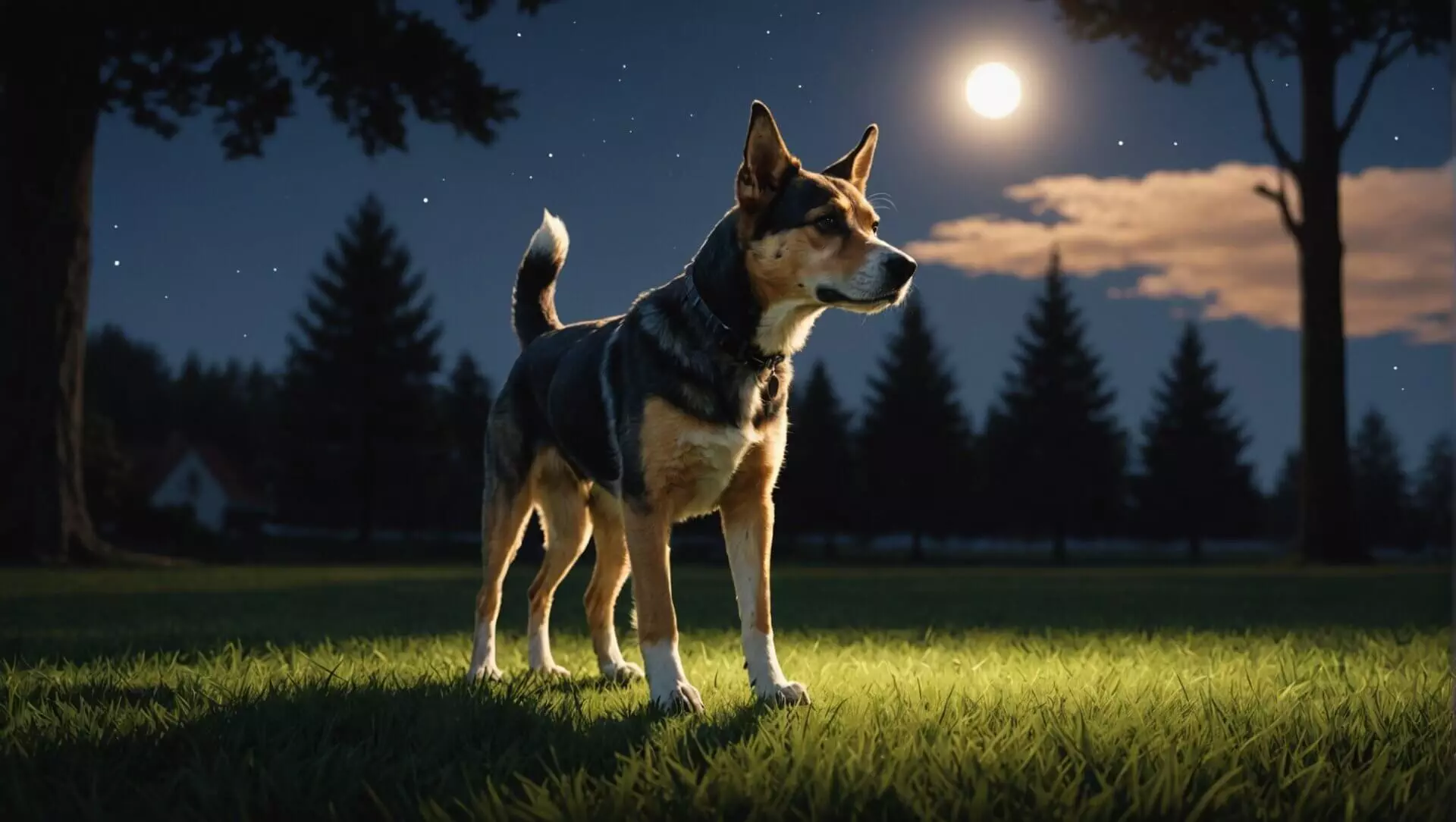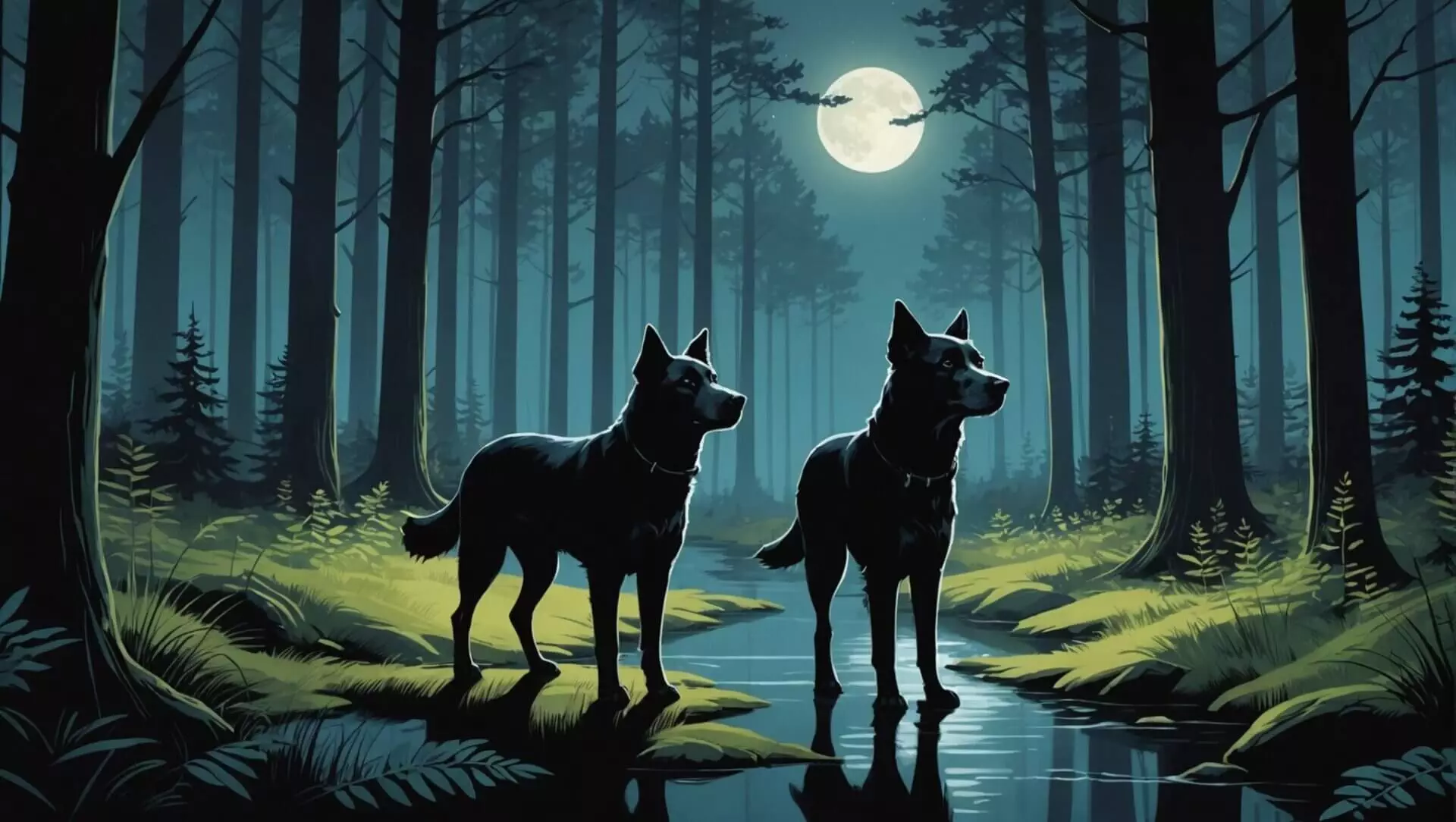Have you ever wondered if your furry friend can see in the dark? The answer is yes—can dog see in the dark is a fascinating topic that reveals the incredible way dogs perceive their surroundings when the lights go out? Understanding your dog’s night vision is not just fun; it can help you keep them safe during those late-night bathroom breaks or midnight play sessions.
If you don’t grasp how your dog’s eyes work in low light, you might miss important cues about their behavior or safety needs. This article will explore how dogs’ eyes are specially adapted for better night vision, the science behind their unique eye structure, and tips on how to assist them in dim environments. So, let’s dive into the world of canine vision and discover how your dog sees the world at night!
Dogs See in the Dark: How They Perceive Night Vision
Understanding How Dogs See at Night
Dogs have special adaptations that help them see in the dark. One key feature is a higher number of rod cells in their eyes. Rod cells are photoreceptor cells that detect light and movement. This allows dogs to see better than humans in low-light conditions. While humans struggle to see when it’s dark, dogs can navigate their surroundings more effectively. Their eyes are built for low-light environments, making them excellent companions for nighttime activities. This unique adaptation gives dogs a significant advantage when exploring in dim light. [American Kennel Club]
Do Dogs Have Night Vision Capabilities?
Yes, dogs have impressive night vision capabilities. They can detect light and movement better than humans can in dim conditions. However, their night vision is not like that of night vision goggles. Instead, it is a natural ability that allows them to thrive in low-light environments. Dogs rely on their keen sense of smell and hearing besides their vision. This helps them navigate and understand their surroundings, especially during twilight or nighttime. Their ability is especially useful for hunting and other activities that occur after dark. [PetMD]
How Dogs See Better Than Humans in Dim Light
The structure of a dog’s eyes plays a crucial role in their superiority in dim light. Dogs possess a special layer of tissue in their eyes called the tapetum lucidum. This reflective layer acts like a mirror, reflecting light that enters the eye back through the retina. This improves their ability to see in low-light conditions and enhances their sensitivity to movement. As a result, dogs can notice slight movements in the dark. This makes them effective hunters and protectors. Their night vision helps detect potential threats or prey when the sun goes down. [Animal Eye Guys]
Table: Key Features of Dog Vision
| Feature | Description |
|---|---|
| Rod Cells | Higher number of dogs for low-light vision |
| Tapetum Lucidum | Reflective layer enhancing night vision |
| Night Vision Capabilities | Better detection of light and movement than humans |
| Color Perception | Limited colors because of fewer cone cells |
Summary of Benefits
- Dogs can see well in darkness because of more rod cells.
- Their tapetum lucidum reflects light, improving night vision.
- Dogs rely on other senses, like smell and hearing, in low light.
Dogs have remarkable adaptations that allow them to thrive in low-light conditions. This unique ability to see in the dark enhances their skills in hunting and exploring. Understanding these adaptations helps dog owners provide a safer environment for their pets during nighttime outings.
Next, we will explore the science behind dogs’ night vision and how it compares to human vision.

The Science Behind Dogs’ Night Vision
What Makes Dogs’ Eyes Glow in the Dark?
The glow in dogs’ eyes at night is because of a special layer of tissue called the tapetum lucidum. This layer is behind the retina, which detects light. The tapetum lucidum acts like a mirror, reflecting light that passes through the retina back into the eye. This reflection helps dogs see better in low-light conditions. The extra light that enters their eyes enhances their night vision, making them more adept at seeing in the dark than humans. When light hits this layer, it creates a noticeable glow in their eyes, especially in dim lighting.
This feature is not unique to dogs; many other animals, such as cats and deer, also have the tapetum lucidum. This adaptation helps them hunt and navigate in the dark. The ability to reflect light makes the tapetum lucidum a secret weapon for nocturnal creatures. It is crucial for their survival in environments where light is scarce. Overall, this reflective layer plays a vital role in helping dogs perceive their surroundings at night. (Source: Chewy)
Comparing Dog Vision to Human Vision
Dogs have a different visual perception than humans. They possess a higher number of rod cells in their eyes, which are sensitive to low light. Rod cells help dogs see in dim conditions. In contrast, humans have more cone cells, which handle color vision and detail. This means that while humans may see more colors, dogs excel at detecting motion, especially in low-light settings.
On a scale of visual acuity, dogs have about 20/75 vision, compared to humans’ average of 20/20 vision. This means that while dogs may not see as clearly as humans, they are better at noticing movement in the dark. Their ability to detect motion is crucial for hunting and avoiding danger. In fact, in the dim light, dogs can spot movement that humans might miss, making them exceptionally nocturnal hunters. (Source: PetMD)
Exploring How Dogs See Color at Night
For color vision, dogs see fewer colors than humans. They primarily perceive shades of blue and yellow, but they struggle to distinguish between red and green. This limited color perception is because of their lower cone cell density. In low light conditions, dogs rely more on their ability to detect movement rather than color.
Dogs experience a form of dichromatic vision, meaning their color spectrum differs from the trichromatic vision humans have. This type of vision helps them focus on motion and contrast in the dark. For example, a dog may notice a small animal moving through the grass even if it cannot see its color clearly. This ability to detect movement is crucial for their hunting instincts. Overall, dogs are well-adapted to see in situations where color is less important than movement. (Source: Hill’s Pet)
Summary Table of Dog and Human Vision
| Feature | Dogs | Humans |
|---|---|---|
| Rod Cells | Higher number | Fewer |
| Cone Cells | Fewer | Higher number |
| Vision Acuity | Approximately 20/75 | Approximately 20/20 |
| Color Vision | Blue and yellow | Correct color (trichromatic) |
| Motion Detection | Excellent in dim light | Good, but less sensitive |
These unique visual adaptations allow dogs to thrive in low-light conditions, making them excellent companions and hunters during the night.

Dogs Need Special Adaptations for Nighttime
Anatomy of Dogs’ Eyes: A Closer Look
Dogs possess unique eyes that help them see well in low-light conditions. Their eyes have a larger cornea and lens than human eyes. This larger size allows dogs to gather more light, enhancing their ability to see in the dark. The retina of a dog has more rod cells than a human’s. These rod cells are specialized photoreceptors that detect light and motion, which are crucial for night vision. The special eye structure of dogs enables them to navigate through dimly lit environments effectively (Wikipedia on Dog Anatomy).
Dogs See in the Dark—A Overview of Their Adaptations
Dogs have several adaptations that help them thrive in low-light settings. One important adaptation is the tapetum lucidum, a reflective layer behind the retina. This layer acts like a mirror, reflecting light that passes through the retina back into the eye. It effectively increases light availability for rod cells, enhancing their night vision. Dogs also have a greater density of rod cells than humans, allowing them to detect movement better in darkness. Together, these features enable dogs to see in environments where light is scarce (Pure Pet Food).
Tips on How to Help Dogs Navigate in Low Light
To help dogs navigate low-light conditions effectively, pet owners can take several practical steps:
- Use Reflective Gear: Equip dogs with reflective collars or harnesses. This gear improves their visibility during nighttime walks.
- Employ Flashlights: Carrying a flashlight illuminates the path ahead, making it easier for dogs to see obstacles.
- Maintain Familiarity: Keep familiar items in the same place, allowing dogs to navigate without confusion.
- Create a Safe Environment: Install motion-sensor lights in frequently used areas to help dogs see better in darkness.
Here’s a quick overview of how dogs adapt to low light:
| Adaptation | Function |
|---|---|
| Larger Cornea & Lens | Increases light intake for better visibility |
| Tapetum Lucidum | Reflects light back into the eye, enhancing night vision |
| High Rod Cell Density | Improves motion detection in low light |
These proactive measures can significantly improve a dog’s ability to move safely and confidently in low-light situations (Chewy). Employing these tips creates a safer nighttime environment for dogs, allowing them to use their natural night vision effectively.
Training Tips for Helping Dogs See at Night
Engaging in nighttime activities can help your dog become more accustomed to navigating in the dark.

Training Tips for Helping Dogs See at Night
Exercises to Improve Dogs’ Night Vision Skills
To enhance a dog’s night vision skills, engage them in exercises during dim conditions. Activities like playing fetch or hide-and-seek in low light can improve their ability to detect movement. These games help dogs rely on their rod cells, which are sensitive to dim light. Adding obstacles can further challenge them and mimic real nighttime situations.
Regular practice helps dogs become familiar with their surroundings in low light. Scent-based games can sharpen their other senses as they adjust to seeing in the dark. This multi-sensory approach builds confidence and strengthens the bond between the dog and their owner. As dogs navigate their environment and enhance their skills, they may encounter new stimuli, such as different sounds and smells that engage their curiosity. This exploration allows them to develop problem-solving abilities and adapt more easily to various situations. Additionally, while training, pet owners might wonder, “do dogs eat insects? ” This curiosity highlights the importance of understanding a dog’s diet and natural behaviors as they thrive in their enriched surroundings.
- Tips for Night Vision Exercises:
- Use soft toys to reduce noise distractions during playtime.
- Gradually decrease the light level to help dogs adapt to darker environments.
- Reward dogs with treats and praise to reinforce positive behavior during training.
Ensuring Safety for Dogs Who See at Night
Safety is essential when dogs navigate low-light situations. Always supervise pets in dark areas to prevent accidents. Create a safe environment by removing hazards, like sharp objects or stairs, that could cause injuries. Familiarizing dogs with their surroundings during daylight can help them feel more comfortable at night.
Using reflective collars and leashes keeps dogs visible to their owners and others. Night lights in commonly used paths can provide additional illumination. Ensuring dogs have a safe space to explore allows them to enjoy their instincts without risking their well-being.
- Safety Tips:
- Always check the environment for potential hazards before letting dogs roam.
- Consider using GPS collars for added safety during nighttime walks.
- Keep a flashlight handy to assist in low-light situations.
Equipment That Can Help Dogs See Better at Night
The right equipment can significantly improve a dog’s visibility and safety at night. LED collars and lighted leashes are popular options for enhancing nighttime visibility. These tools emit light, making it easier for owners to spot their dogs in the dark. Reflective vests or jackets can also provide additional visibility, especially when walking near roads.
Using specialized gear designed for nighttime activities can enhance a dog’s experience. For instance, light-up toys can make games of fetch more engaging and safer after sunset. Owners can explore various products to find what works best for their dog’s needs and preferences.
| Recommended Equipment | Description |
|---|---|
| LED collars | Bright and easily visible during nighttime. |
| Reflective vests | Increase visibility without adding bulk. |
| Lighted leashes | Help control dogs while providing visibility. |
By incorporating these training tips and equipment, dog owners can help their pets navigate the dark safely and effectively. This enhances their night vision skills and overall well-being.

Insights from Research on Dog Vision
Studies on Canine Night Vision and Behavior
Research shows that dogs have impressive night vision. They can see much better in low light than humans. This ability is thanks to a higher number of rod cells in their eyes. Rod cells are special cells that help with seeing in dim light. Studies show dogs can detect motion and navigate through dark spaces more effectively than humans. This is a significant advantage during nighttime activities and helps them perform tasks like hunting or searching. Dogs’ superior night vision comes from both their eye structure and the way their brains process visual information.
| Key Factors in Canine Night Vision | Description |
|---|---|
| Higher rod cell count compared to humans | More rod cells enhance their ability to see at night. |
| Ability to detect motion effectively | Dogs excel in spotting movement in low light. |
| Enhanced navigation in low light conditions | Dogs can move easily in the dark. |
What Experts Say about Dogs’ Ability to See in the Dark
Experts agree dogs can see better in low light than humans, but they do not possess the same night vision as nocturnal animals, like cats or owls. While dogs have adaptations for low-light conditions, they still rely on some ambient light. The reflective layer in their eyes, known as the tapetum lucidum, plays an essential role in their night vision. However, it is important to note that dogs cannot see in complete darkness. Many experts emphasize that understanding these limitations is crucial for dog owners, especially when planning nighttime outings with their pets.
- Expert Insights:
- Dogs excel in low light but black true night vision.
- The tapetum lucidum enhances their ability to see in dim conditions.
- Complete darkness remains a challenge for dogs.
Future Trends in Understanding Dog Vision
Research continues to develop, exploring the complexities of dog vision. Future studies aim to examine how different breeds may vary in their night vision abilities. Scientists are also interested in the effects of environmental factors on dogs’ visual capabilities. As technology advances, researchers may use new methods to study canine vision more closely. Understanding how dogs perceive their surroundings can lead to better care and training techniques for dog owners. This knowledge can improve safety for dogs during nighttime activities and help owners create environments that support their pets’ unique vision. Additionally, researchers are particularly curious about how specific activities and environments, such as those involving Bernese Mountain Dogs and water, might influence visual performance. For example, studying how these dogs navigate aquatic environments could reveal fascinating insights into the interaction between vision and other sensory systems. Such findings may contribute to more tailored approaches in training and care, ensuring dogs can thrive in a variety of settings.
- Research Directions:
- Investigating breed differences in night vision.
- Studying environmental effects on visual perception.
- Using technology to enhance understanding of canine sight.
Insights gained from ongoing research into dog vision can benefit dog owners. Recognizing the strengths and limitations of dogs’ night vision is essential for ensuring their safety and well-being during night outings.
Conclusion
In summary, dogs have amazing night vision abilities that help them see in low-light conditions much better than humans. Their secret weapon is the tapetum lucidum, a special layer behind their retina that reflects light, allowing them to perceive movement and shapes even in the dark. The unique anatomy of their eyes, filled with more rod cells, enhances their ability to navigate during nighttime.
As pet parents, knowing how your dog sees can help you provide a safer environment for them, especially in dimly lit areas. Keep exploring the fascinating world of dog vision and discover how you can help your furry friend thrive, whether it’s through training or using special equipment. There’s always something new to learn about our amazing canine companions!

